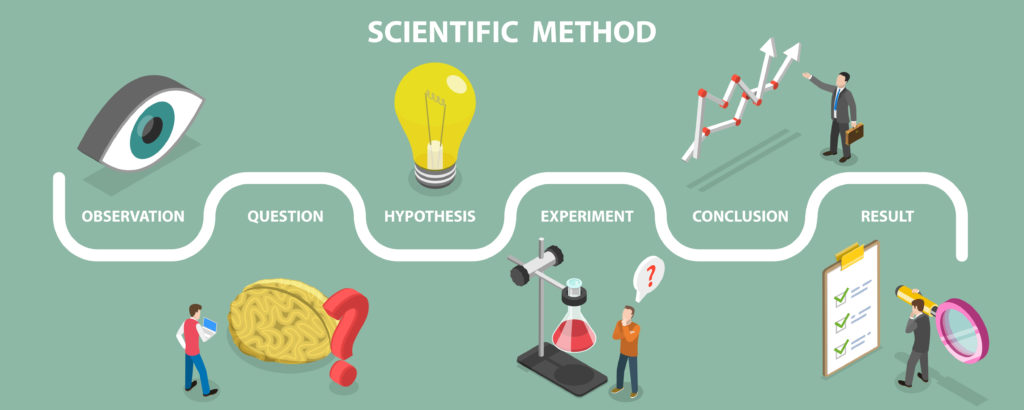Have you been driving traffic to your website, but nobody’s inquiring about or buying your products? It might be time to step back and think about starting a Conversion Rate Optimization (CRO) program.
CRO is concerned with turning more website visitors into customers. But to do that, it’s important to understand the real problems (and opportunities) you have that might be causing your visitors to head out your virtual door.
If you’re just starting or your website is yet to reach thousands of sessions per week on average, experimentation and starting a CRO program can be difficult but it’s definitely not impossible.
Below are some tips to help you get started:
4 Conversion Rate Optimization Tips for Beginners
1. Familiarize Yourself with Your Data Points
Data can be scary, especially if you’ve never tried navigating through it before. However, your comfort level in going through your chosen analytics tools can affect how well you interpret data and make actionable insights out of it. There’s a lot of data to consider when incorporating customer relationship management (CRM), heatmap, session recording, survey, and other sales tools, so it’s important to familiarize yourself.
It’s not a prerequisite to have all these data points to build a CRO program. But, it’s highly recommended to check more than one data point in your analysis to help you build a better picture of your situation.
When you know and understand your data points well enough, it also helps you check its integrity. Are you collecting the correct data to help you answer your questions?
2. Expose yourself to different websites
You might have heard of the phrase “best practice” being tossed around every now and then, especially as you navigate through improving your website and executing digital marketing strategies. To be labeled as a “best practice,” the method, strategy, tactic, or process has been tested and yielded consistently positive results over time. Because of that, they became the standard or guideline moving forward.
In website usability (UX), we follow 10 broad rules of thumb known as heuristics.
Heuristics provide mental shortcuts and strategies that help make decisions faster. But, because the guidelines are generic, exposing yourself to their various applications is important. Studying User Experience (UX) research is also one way to help broaden your knowledge. Publishers like Baymard Institute are incredible learning resources for e-commerce websites.
3. Revisit the Scientific Method

Do you recall the scientific method from grade school? If not, that’s okay. We’ll just take the core description – it’s the process of observing, asking questions, and seeking answers through tests and experiments.
While it might be true that your site is not yet ready to conduct experiments for your new CRO program, the scientific method is still useful to determine problems and opportunities, as well as how to resolve them.
It’s important to truly understand your problem. The questions you will ask at this stage will determine the direction of your optimizations. Don’t forget to create a hypothesis, provide solutions based on those observations, and determine your key performance indicators (KPIs) before executing anything.
4. Do a Pre-test Analysis
It’s a common mistake to go ahead and just test or tweak things without really checking your baselines. If the website isn’t getting 5,000 to 10,000 sessions per week on average, you’ll likely be unable to get definitive results, but it will give you an idea of what changes you can or cannot make with high confidence levels.
CXL has a user-friendly pre-test calculator as a reference to get you started.
CRO Tactics for Low-Traffic Websites
All these tips won’t make sense until you actually do it. Start small, and start somewhere.
CRO strategies and building an experiment design are tricky, but in your first few attempts, you’ll learn key points that will help you sustain your process and drive growth. At this stage, the most important thing is to learn and bring all those to your next designs. In executing your CRO program, avoid limiting yourself to just fixes needed on the website.
Optimization can be seen in different stages – copywriting, promos, service, packages, and a whole lot more. Don’t be scared to check it out. If you don’t know where to start, here are some ideas:
1. Copy Optimization
Read through your pages that have the highest traffic, but also the highest exit rate. If these pages aren’t intended to be the exit page, you should probably take a closer look at how the page is written. Start by asking yourself these questions:
- Are you using too much technical jargon?
- Have you laid down your core services?
- Are there too many content blocks?
The goal of this exercise is to ensure that we are not blinded by our curse of knowledge. We might think that we’re explaining our brand and services the best we can, but our users and visitors may not agree.
2. User Test

Usability issues will kill conversions. Some issues can easily be spotted, but some can be more complex, requiring more pairs of eyes to catch and resolve them. User testing can be outsourced, but if you’re looking to start small, hallway testing might be the best setup for beginners.
Feel free to corroborate results with your qualitative and quantitative data. This will help determine and prioritize usability issues that need to be addressed.
3. Talk to Your Sales Team
Your sales team or anyone who interacts with your clients has invaluable insights. Yes, insights from your current client roster can help you optimize your website and your product offerings. Additionally, your sales team and account managers, among others, know your client’s frustrations, their wishlists, and any other objections that could cause them to leave (or not give their business to you).
Understanding problem areas alongside how your client-facing teams resolve those concerns can help you tackle the problems head-on.
4. Swing for Big Changes
Do you still want to try experimenting despite managing a low-traffic site? That’s understandable. If you’re amenable to testing at a lower power (eg. 85% statistical significance and lower), go for tests that make it obviously different from the control or current site. Below are some examples, but these are non-exhaustive:
- Price changes
- Promos or bundles different from the control
- Complex flow changes
- New Products
A setup like this will make you more sensitive to any metric improvements. Still, make sure to limit testing to a maximum of 8 weeks to ensure data integrity.
Ready, Set, CRO!
Remember, CRO is a process and not a magic bullet. Continuously analyze, test, and implement for sustainable growth.
Need help getting started? Spiralytics is here to guide you. We’re a conversion rate optimization agency and we’ll help you set up a strategy that will empower you to turn visitors into leads, and leads into loyal customers.
Contact us today to start your CRO journey.





